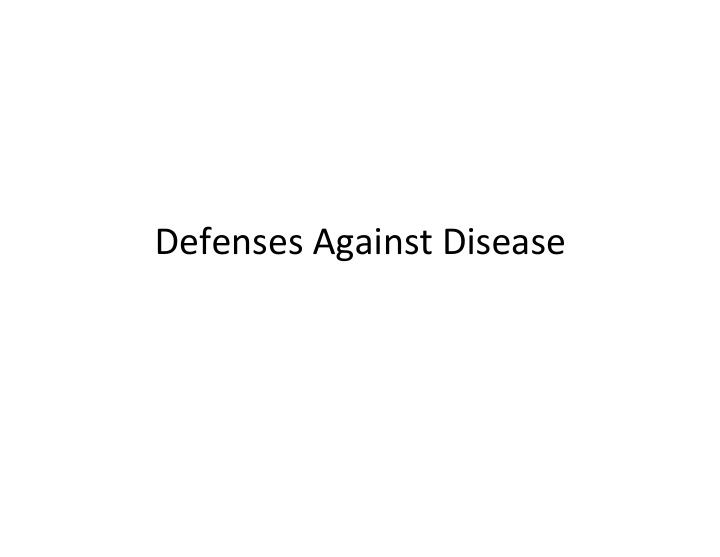



Defenses ¡Against ¡Disease ¡
Origin ¡of ¡Immune ¡Cells ¡ Bone marrow stem cell Bone marrow Myeloid Lymphoid maturation precursor precursor Thymus maturation B cell Monocyte Granulocytes T cell Dendritic cell Macrophage Neutrophil Mast cell Plasma cell
Antibody Mediated Immunity Uptake and Production degradation of antibody of pathogen B cell forms many plasma cells Antigen- reactive B cell Plasma cell MHC II ¡ Cytokine Pathogen Antigen activation presentation antigen of B cell TCR Cytokines T H 2 cell
Secondary response Primary response Immune response Antigen reexposure Antigen exposure 200 0 100 Time (d)
Complement and Antibodies Macrophage membrane Antibody FcR Antigen C3R Pathogen Complement
Antitoxin/Exotoxin reaction Toxin + antitoxin Cell Toxin molecules Neutralized toxin Cell damage Cell not damaged
Figure 28.13 Oppor- Systemic Symptom- Swollen lymph glands Subclinical immune tunistic immune free dysfunction infections deficiency 1000 900 10 6 Normal 800 range for T H cells 700 HIV T H 10 4 600 RNA cells copies per 500 per ml mm 3 of Significantly 400 of blood blood depressed Death 300 10 2 T H cells 200 Severe 100 T H cell depletion 0 0 12 18 54 60 66 72 78 84 6 24 30 36 42 48 Time (months) after HIV exposure
Hypersensitivity B cell makes Antigen cross- IgE sensitizes tissue IgE to antigen links two antibody mast cells by binding to B cell molecules surface IgE receptors IgE Antigen IgE receptor Mast cell Subsequent binding exposure fragment to antigen Helper APC interacts function with B and Mast T cells cell T H cell T cell with T cell receptor Release of allergic to antigen mediators (histamines, serotonin, and so on) Allergies Hay fever, asthma
Recommend
More recommend